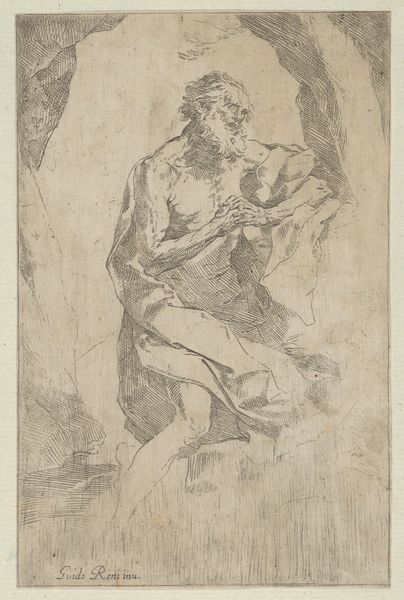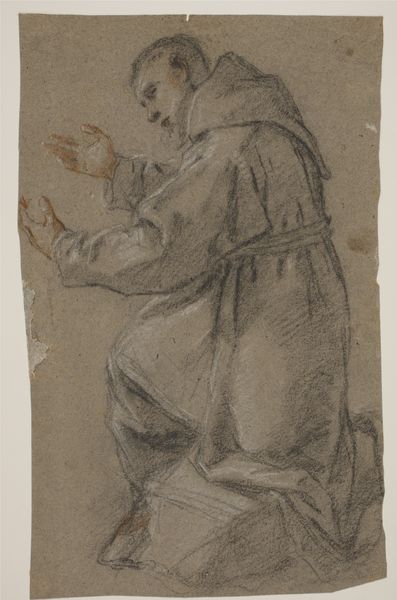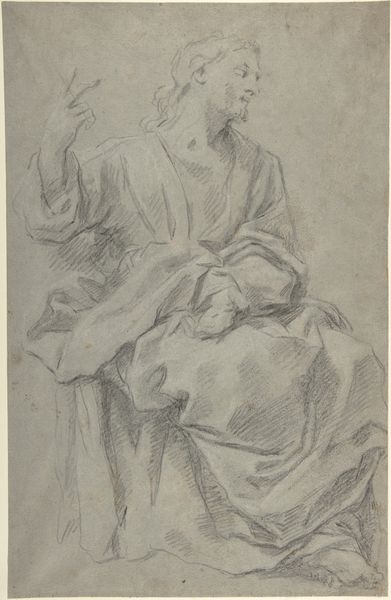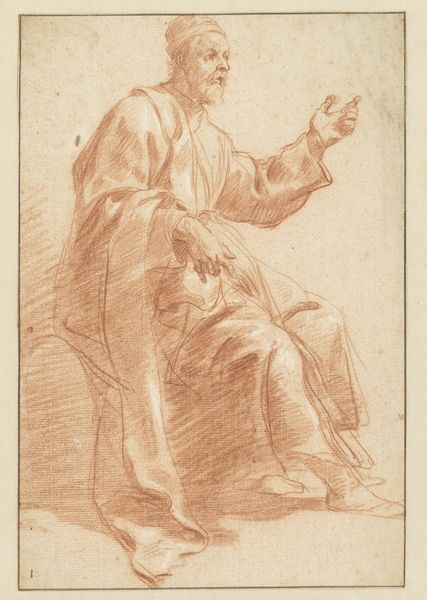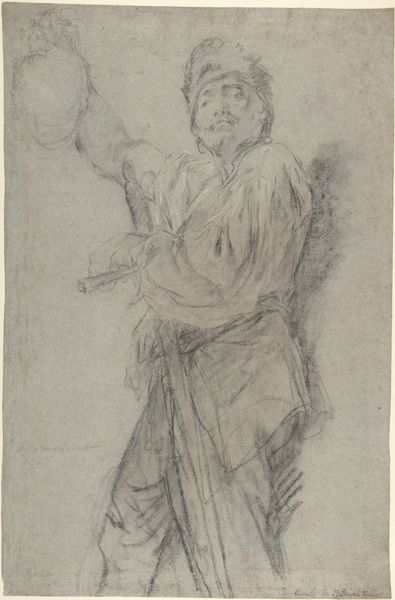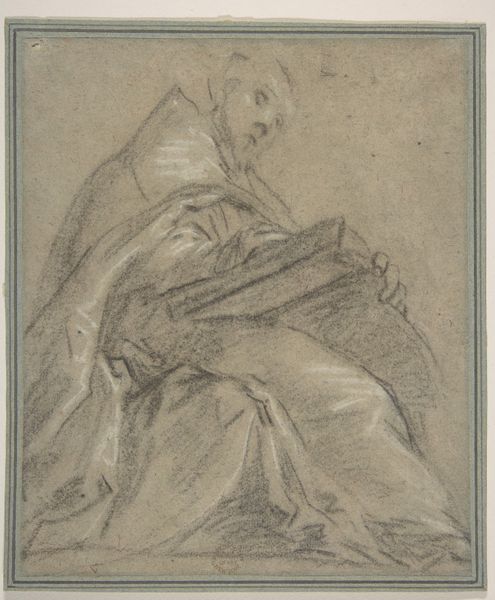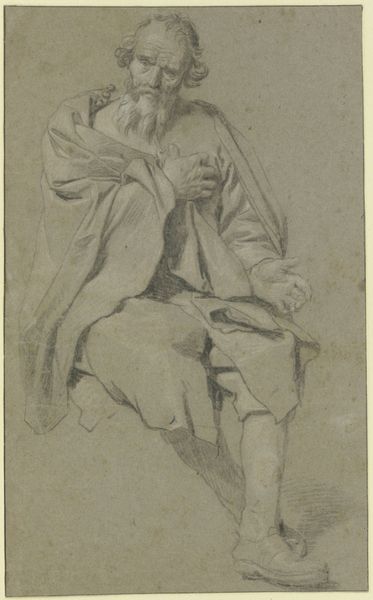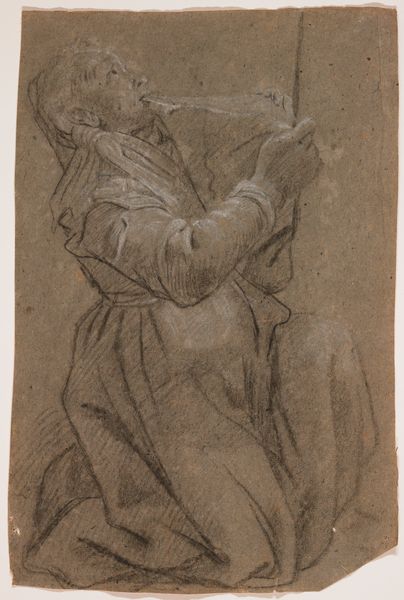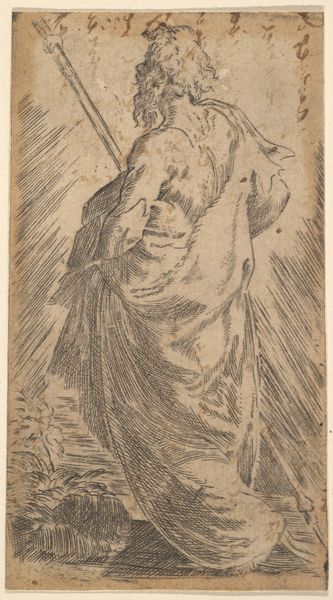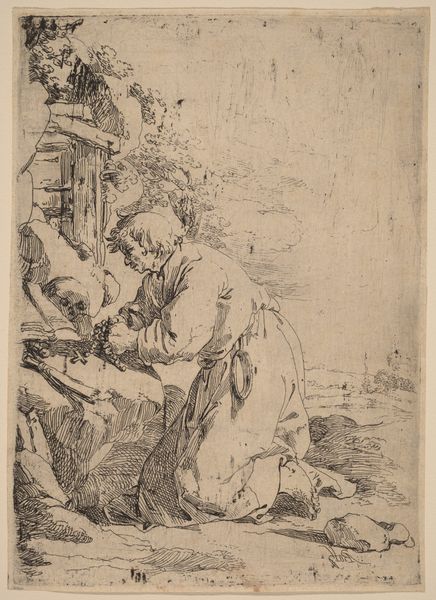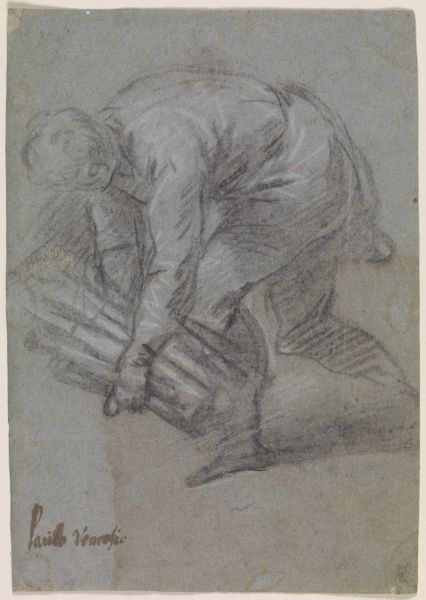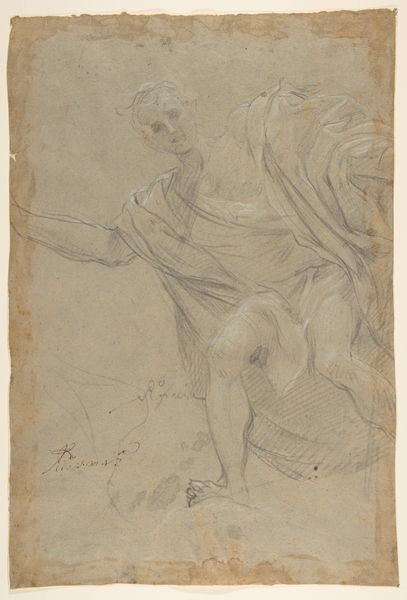
Seated Male Figure with the Head of an Onlooker (recto); Standing Male Figure in a Monk's Habit (verso) 1548 - 1612
0:00
0:00
drawing, pencil, graphite
#
portrait
#
drawing
#
head
#
figuration
#
11_renaissance
#
pencil drawing
#
pencil
#
graphite
#
italian-renaissance
Dimensions: sheet: 15 1/2 x 9 3/8 in. (39.4 x 23.8 cm)
Copyright: Public Domain
Curator: Before us, we have a compelling graphite drawing attributed to Bernardino Poccetti, likely created sometime between 1548 and 1612. Its full title is “Seated Male Figure with the Head of an Onlooker (recto); Standing Male Figure in a Monk's Habit (verso)." The artwork currently resides at the Metropolitan Museum of Art. Editor: There's a melancholic stillness to this sketch, isn’t there? The lines are delicate, almost hesitant, and that soft graphite adds a hazy quality. I feel like I'm peering into someone's private, contemplative moment, but I also want to ask: What kind of man are we observing, and who does he write to? Curator: You touch on a critical tension. We see the artist as an individual and as an archetype, as "man" here also functions as "author." It also asks the critical question for the artist of, Who will read this after I'm gone? I find myself captivated by that subtle figure sketched in the background—the "onlooker." Its presence adds a layer of introspection. It almost looks as if the subject knows his image will be viewed. This drawing is thus acutely conscious of the social gaze, of who it performs for. Editor: That’s a vital reading, thinking about the “onlooker” as almost a manifestation of the act of viewing itself! The seated man, with his book, assumes a traditional scholarly posture, while the presence of the monastic figure on the reverse challenges that vision. Is Poccetti hinting at internal debates between different modes of knowing: religious, scholastic, or, perhaps, a tension between sacred versus secular forms of labor? Is his art the new scripture? Curator: Precisely. Consider also the medium. The pencil as a tool lends itself to draftsmanship and sketching, implicitly linking it to an artist's social station, particularly if religious devotion previously informed image creation, now displaced by a rising interest in Humanism. The material is more like silverpoint but this lends itself better to rapid notetaking and more economical artmaking. We can view that artistic identity in opposition to traditional patronage systems of the time that privilege other formats. The rise of a new, cheaper way of representing reality opens doors for broader economic possibility. Editor: It seems Poccetti gestures towards both: preserving tradition while signaling a break. The ghostly figure on the back haunts the artist's identity: one part spiritual devotee and one part creative worker for profit, his artwork made more reproducible and less individualized as a commodity. Even something that feels as intimate as this drawing participated in the burgeoning debates over value, authorship, and even, democracy. Curator: Seeing it this way illuminates the layered cultural forces at play. What first appeared as an intimate study of a man reveals to us a complex commentary about emerging notions of the social image in its historical era. Editor: Agreed. It shows how a simple drawing can contain worlds.
Comments
No comments
Be the first to comment and join the conversation on the ultimate creative platform.
